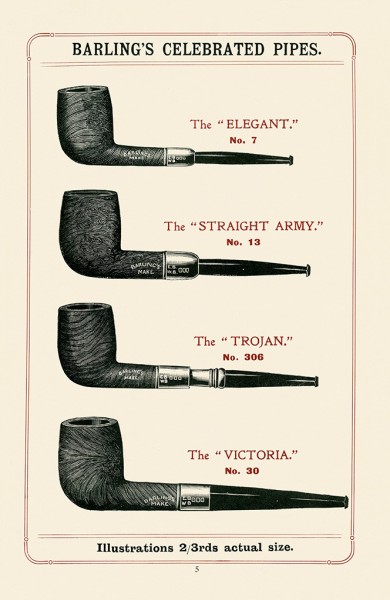Is a pipe with just a metal band around the shank end considered a "military mount" or only if it has that band and a metal fitting (spigot) on the end of the stem? I'll set back and eat my popcorn now. : :
:
 :
: :
:I'd reckon the design has been in use at least since the 1860's."The Spigot style evolved from the practice of soldiers in earlier centuries who repaired broken pipes by sliding a used cartridge case over the shank and reinserting the mouthpiece."

I will respectfully disagree, and Barling will back me up. A military mount does not use a metal covered tip on the stem. A spigot, which uses a different shaped shank cap does use a metal covered end on the stem. Spigots use a squared off end, while a military mount uses a rounded cap, also known as an "olive".A true "military" mount. called by Peterson and others a "spigot", uses a metal socket on the shank that a metal covered tip on the stem plugs into.




I think the ferrule end with the tapered seem is your original design
We know the term pre-dates WWI, but you might be right -- trench art could have certainly given the term staying power.Brass is easy to work. Trench life is very boring. I suspect there is a germ of truth to story. Some of the "trench art" from WWI is very intricate.


